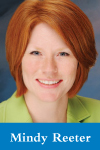by Mindy Reeter
It’s that time again. No, not tax time, but institutional review board (IRB) budget-writing time! My university’s fiscal year begins July 1, and preparation always starts early.
As a community IRB, we are supported financially by community partners. Many years ago, when the research volume was much less, such support came at a standard flat rate. In 2006, however, the need for a new way to calculate the cost for services became apparent as the research volume fluctuated among each partner,.
That year, we developed and initiated a method called the Agenda Scoring Method. Each item that appeared on our IRB’s agenda in the previous year was counted as an individual action. On IRB forms, one participating community partner is designated as the active research site. This helps to ensure that we know who to allocate the points to. Points are then assigned to each item based on the staffing and resources required to provide substantive and meaningful review.
The scale used to assign points is shown below:
- New Full Board Protocols = 4 points [1 IRB specialist for pre-review, IRB chair review, secondary reviewer, convened board]
- Full Board Changes in Research and Continuing Reviews = 3 points [1 IRB specialist for pre-review, primary reviewer, convened board]
- Unanticipated Problems Involving Risks to Subjects or Others, Expedited and Exempt New Studies = 2 points [1 IRB specialist for pre-review, IRB chair review and approval]
- All Others = 1 point [1 IRB specialist, IRB chair review and acknowledgement]
Points are assigned, and tallied for each community partner. Percentages of research volume based on these numbers are presented to the Liaison Committee, an IRB advisory committee made up of community partners, in March.
Community partners are known as variable-fee partners or non-variable fee partners. Variable-fee partners are invoiced for IRB services based on the percentage of their usage in the past year. Non-variable fee partners are invoiced at a set rate for IRB services regardless of their usage.
The variable fee partners’ contribution is determined by the difference between the projected expenses for our IRB and the revenue generated from the non-variable affiliates’ set rate. This difference is then divided among the variable fee affiliates according to as the weights calculated by the Agenda Scoring Method.
Budget numbers for the variable fee affiliates are presented to the Liaison Committee in June for acknowledgement before the university’s budget deadline of July 1.
This method of cost allocation has worked well for our IRB. IRB expenses have remained relatively constant—salaries and benefits, IRBNet fees (electronic submission solution), food for meetings, and PRIM&R membership and conference fees. Our portfolio of community partners has remained stable and committed to our vision of being an exemplary and innovative IRB that aims to respect and protect people in the Central Illinois region who participate in human subjects research.


No comments! Be the first commenter?